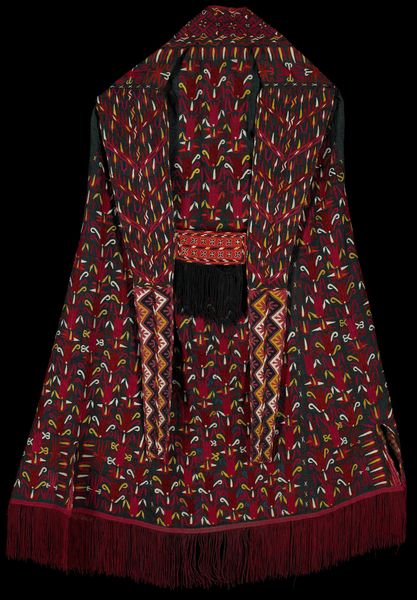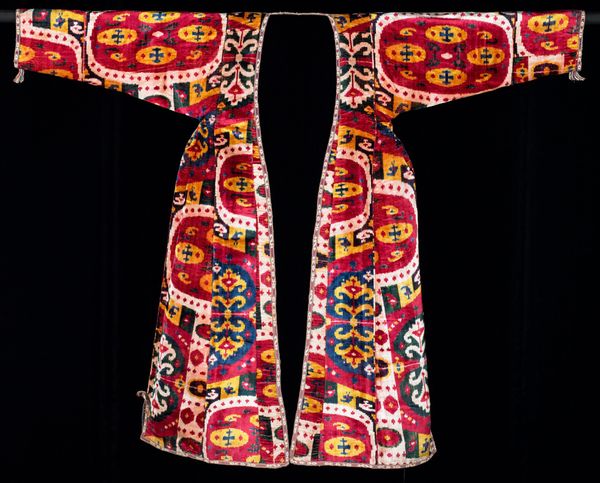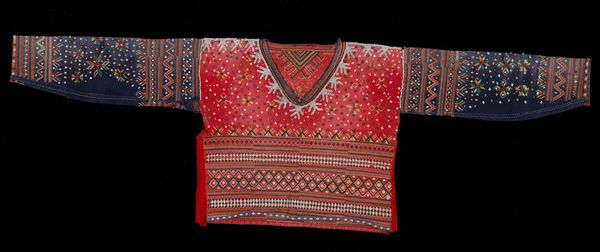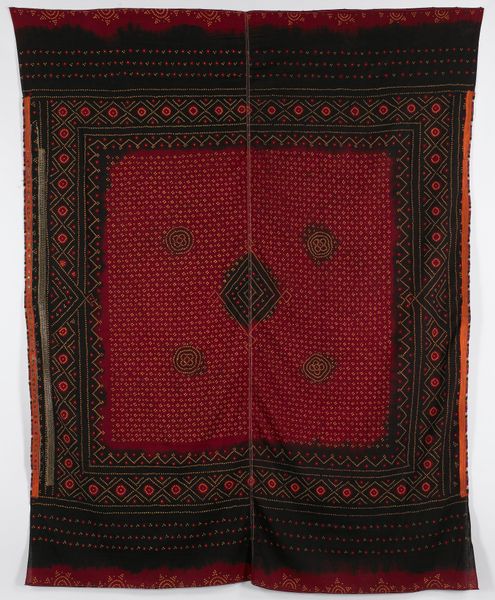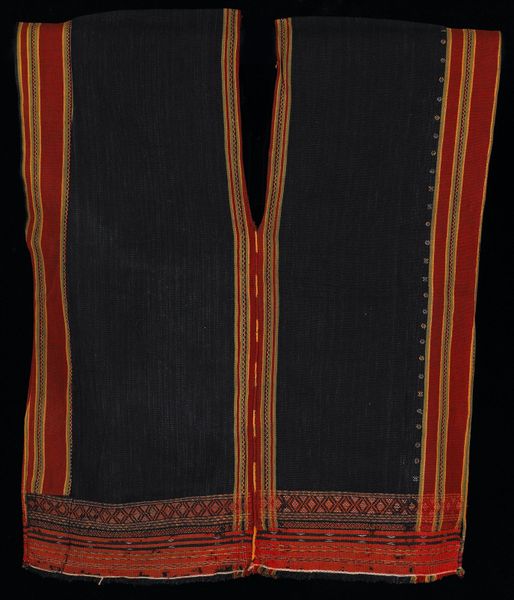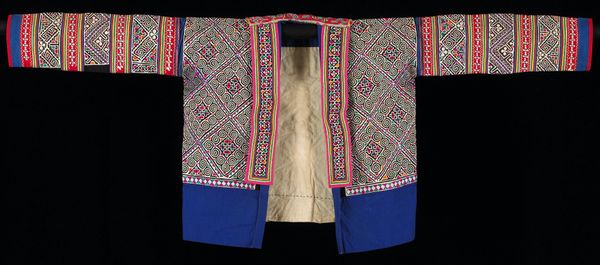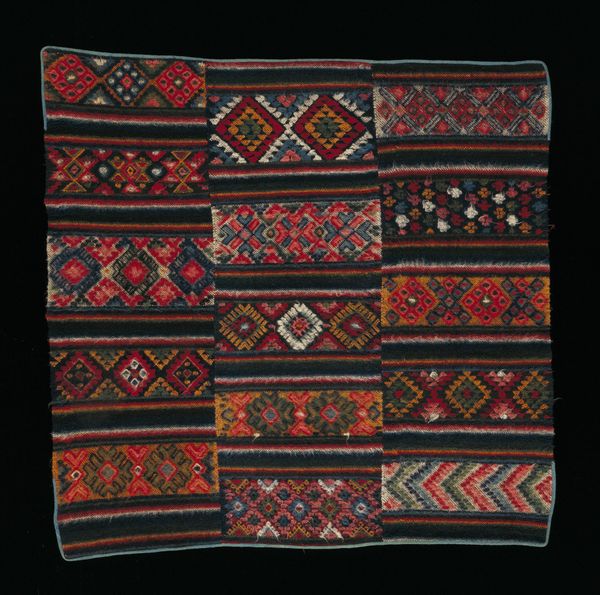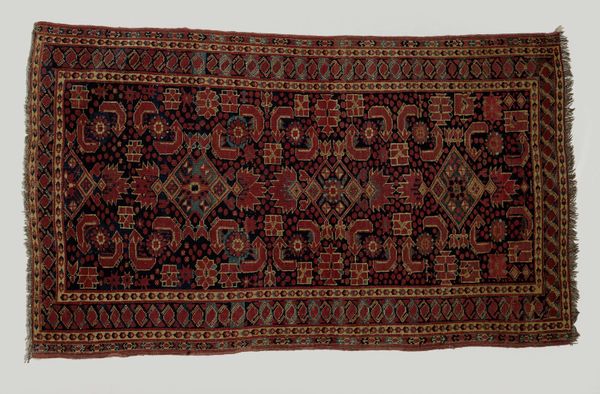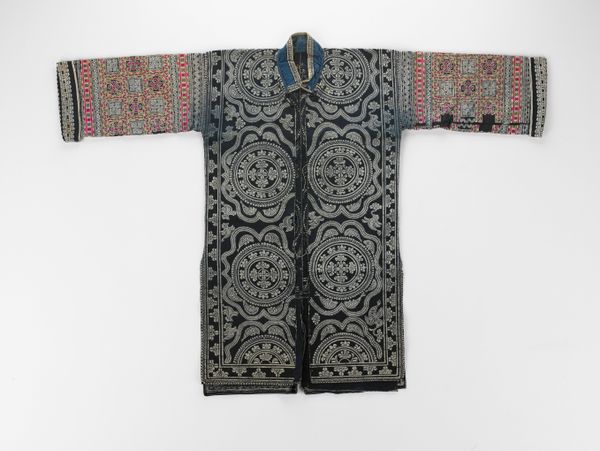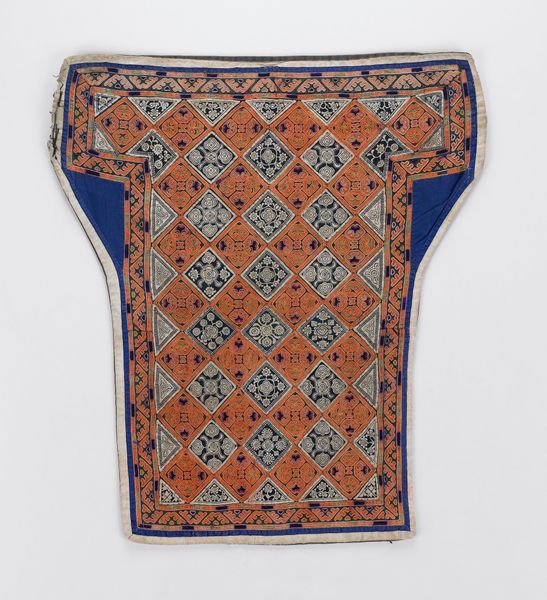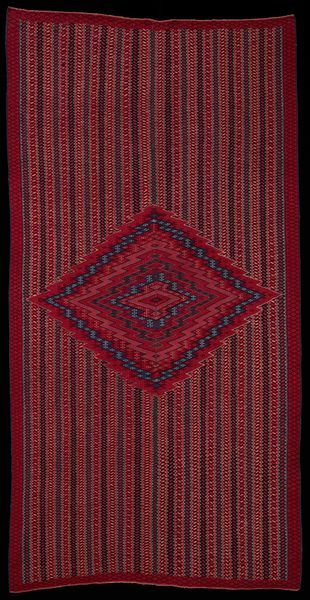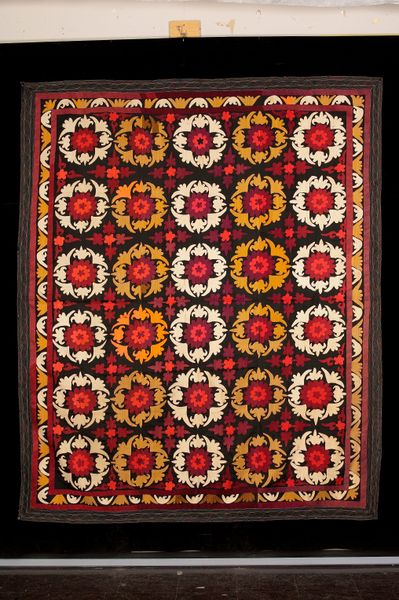
weaving, textile
#
pattern heavy
#
pattern-and-decoration
#
weaving
#
textile
#
fashion and textile design
#
geometric pattern
#
pattern design
#
geometric
#
repetition of pattern
#
pattern repetition
#
textile design
#
layered pattern
#
funky pattern
#
combined pattern
Dimensions: 20 1/8 x 18 in. (51.12 x 45.72 cm)
Copyright: Public Domain
Curator: Here we have a yoke from a woman's tunic, created in the early 20th century. It is currently housed here at the Minneapolis Institute of Art. Editor: Wow, it is visually explosive. The piece certainly has a rhythmic quality, thanks to the repetition of shapes, but almost too busy, no? It is overwhelming in a curious way. Curator: Notice how the unknown artist deftly uses color. There's a carefully orchestrated balance between the reds, purples and neutral tones that directs the eye. And observe the fine craftsmanship apparent in the cotton and silk weaving. Editor: The "anonymous" aspect is fascinating. This textile, embedded within a garment intended for a woman, speaks volumes about identity and visibility. Who was she? What role did textiles play in the articulation of womanhood within this specific culture? And how does its geometric and heavily patterned textile relate to global currents of fashion and textile design during this period? Curator: It is undeniable that geometric motifs serve as a structural device, offering not only visual pleasure but also, by all indications, some sort of encoding via visual signifiers. Note that this object finds its place in art history among works influenced by "pattern and decoration." The meticulous layering and the overt combination of patterns certainly support this thesis. Editor: The deliberate choices regarding visual organization, shape, and color seem less like “decoration” and more akin to potent statements. Curator: It invites a closer look, doesn't it? Editor: It encourages questions about women's experiences and representation. This "Yoke from a woman’s tunic," this fragmented yet eloquent object, is pregnant with implications for how textiles can transmit individual narratives as well as communicate social structures.
Comments
No comments
Be the first to comment and join the conversation on the ultimate creative platform.
